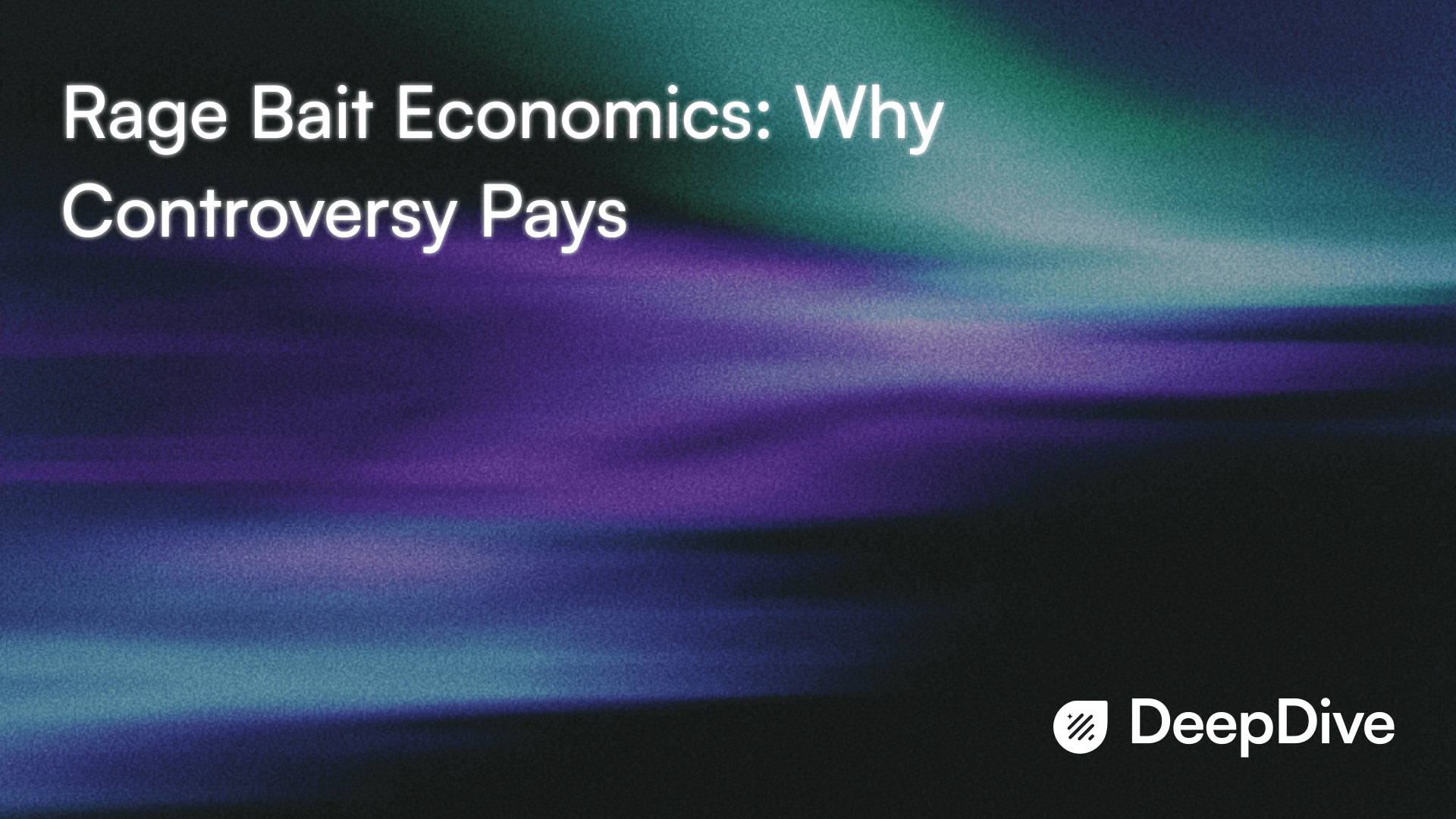We are excited to announce our $2M seed round led by Joa Capital.
Read Now

November 7, 2025
Fabiana Binte Mesbah
Still wondering what does rage bait mean? At its simplest, rage bait is content engineered to provoke anger, outrage, or moral panic so viewers react, comment, and share. The tactic trades on high-arousal negative emotions because platforms reward strong reactions, and reactions monetize. The mechanics are straightforward: outrage → engagement → amplification → reach. But the business math underneath that loop is what makes rage bait a tempting, if risky, play for brands and creators.
August 2025 was a case study in how quickly rage bait can move markets and attention. American Eagle’s “Sydney Sweeney Has Great Jeans” ads ignited debates about tone and implications — and the stock reaction was immediate, with premarket jumps and large swings reported as the campaign trended. At roughly the same moment, E.l.f. Beauty’s Matt Rife tie-up and India’s Yes Madam “leaked” HR stunt sparked furious conversations online; restaurants in the U.S. continued to face backlash over added surcharges that some framed as exploitative.

These instances show that controversy now functions like fast-moving currency: it can drive sales and headlines nearly overnight.
The economics aren’t just anecdotal. Large-scale analyses have quantified the effect of negativity on attention: for headline-length content, each additional negative word increased click-through rates by about 2.3%, while negative affect boosted sharing and retweets significantly across datasets. Combine that with platform behavior — Facebook’s internal ranking once weighed reaction emojis far more heavily than “likes” (effectively amplifying emotionally charged posts) — and the algorithmic incentives for rage become obvious.
Pro tip: Use AI-powered sentiment analysis to track immediate shifts in conversation tone and analyze those sentiment changes in real-time.
From a short-term ROI perspective, rage bait is neat: spikes in traffic, social mentions, and even stock bumps can be tied to a single campaign window. Reports from August showed American Eagle capturing massive impressions and customer interest after its controversial spot, and creators like Winta Zesu have monetized outrage with six-figure returns. For growth-oriented marketers, the math is seductive: provocation reliably increases visibility, and visibility can be converted, at least temporarily, into clicks, orders, and investor attention.

But this is where the accounting gets messy. Viral outrage often inflates surface KPIs while eroding trust and long-term brand equity. Rage bait can trigger regulatory scrutiny, prolonged reputational damage, or consumer boycotts — effects that are harder to measure in real time. Moreover, platform-driven amplification of negative content has increased spam, abuse, and clickbait problems, creating a feedback loop that ultimately harms platform quality and brand safety.
If brands are going to flirt with controversy, they need a checklist that treats outrage as an experiment with measurable risk:
Controversy pays — until it doesn’t.
Rage bait is not magic; it’s a high-voltage tactic with predictable short-term returns and unpredictable long-term costs. The modern marketing decision is a strategic one: optimize for fleeting attention and potential short-term gains, or invest in trust-building that compounds over years. If you must experiment with outrage, instrument everything, plan your exit, and have social listening tools at the center of the operation — so you can tell quickly whether controversy is a performance booster or a brand liability.
Discover How Audience Intelligence can help your brand grow